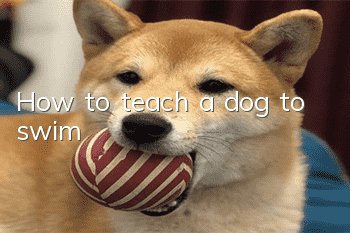How to teach a dog to swim

Training methods for teaching dogs to swim
1. Start small, slow and shallow.
Don’t expect it to learn to swim the first time. If you practice swimming with your dog in open water, stay in shallow water and train parallel to the shore and avoid deep water. It's best to start with a small area and keep your initial swimming training to a minimum.
2. Go into the water and wait nearby
The first time your puppy goes into the water can be a scary experience. Encourage your dog to follow you into the shallow end of the pool and show him where the underwater steps are in case he needs to get out. Your presence in the water will encourage your dog to build confidence, allowing him to earn rewards for his efforts, whether it's verbal praise or a special treat from your hand.
3. Use your hands to guide your dog.
Initially, your dog may lift his front paws to try to get out of the water, causing his back to sink. To prevent this from happening, place one hand gently on its back and the other on its front legs to prevent it from cutting through the water. Once it starts paddling, it may not fully utilize its hind legs. To guide it forward, touch or tickle its back paws to get it to kick those legs and speed forward.
4. Extend the distance between you and your dog in the water.
You can move slightly away from it and ask it to paddle toward you, while paying attention to its body language to make sure it still enjoys being in the water. If at any time you sense that it is uncomfortable, immediately guide it toward the exit and wait until it calms down before starting again.
5. Playing games in the water
The best way for owners to let their dogs enter the water easily is to make it fun. You can find shallow water areas and play fetch with your dogs. To play, toss the toy into the water and then slowly make larger tosses to encourage the dog to get further into the water.
6. Provide lots of praise
Finally, if your dog does a good job, give it lots of praise so that it associates the activity with positive feelings.
- How to deal with traumatic infection and suppuration in dogs
- Why are native dogs not susceptible to parvovirus?
- How to disinfect canine distemper
- How long does it take for a poodle to be pregnant and give birth?
- Can dog skin diseases be transmitted to humans? How to prevent them?
- Symptoms of mastitis in dogs
- Should dogs be dewormed or vaccinated first?
- How should a Chow Chow be groomed? What should you pay attention to when dressing up?
- How to calculate the best breeding time for dogs?
- What to do if your golden retriever is itchy?



